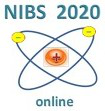Speaker
Description
Negative ions as well as singly and multiply charged positive ions are generated in a laser produced plasma. During laser vaporization of the target, various atomic processes related to negative ion production take place involving radiative capture, dielectronic recombination, and ternary collisions, where the last is found to be most probable in the case of a laser plasma due to its high electron density [1]. During ternary collisions, electrons collide with neutral atoms to form negative ions. When the plasma plume is geometrically confined, plasma density is further increased, which also increases the probability of ions and electrons in colliding with neutrals [2]. In this work, laser vaporized plasma is confined by forming a cavity on the target by multiple pulse ablation, wherein the inner wall of the cavity constricts the plasma plume. The ion species and velocity distribution are characterized by time-of-flight (TOF) spectroscopy.
The setup consists of a laser ion source and a TOF spectrometer. The ion source consists of a Q-switched Nd:YAG laser (pulse width = 5 ns, wavelength = 1064 nm, repetition rate 10 Hz) which is focused on the 10 mm diameter graphite target at 12$^\circ$ incidence, with 0.7 mm spot diameter. The laser is incident on the same spot of the target surface while being rotated along its axis, deepening the hole as the number of subsequent pulses increases. Ions passing through an extraction aperture are accelerated towards the TOF spectrometer which consists of a 50-Ω resistor terminated Faraday cup (FC) array positioned 0.6 m from the target axis. Flight times of the ions are recorded by a 250 MHz oscilloscope triggered by a high-speed photodiode. The system is operated inside a stainless steel vacuum chamber with an ambient pressure of 10$^{-6}$ Pa.
Preliminary experiments for initial target ablation of a fresh target surface at 2 GW/cm$^2$ laser power density and -2 kV extraction voltage resulted in an initial burst of fast electrons followed by positive ions. Collected ion current was observed to be highest along the target axis. Experiments are underway to correlate the laser fluence and hole depth with the resulting ion spectra.
References
[1] S.S. Alimpiev, M. E. Belov, V.V.Mlinsky., S.M. Nikiforov, and V.I. Romanjuk, Appl. Phys. A 58 67 (1994).
[2] Y. Qiu, C. Yao, C. Yao,1,2 J. Gan, W. Zhang, N. Xu, J. Sun., and J. Wu, AIP Advances 9, 095021 (2019).
Summary
A nanosecond laser ion source is being developed in the investigation of the effect of multiple ablation in ion species produced by a confined laser plasma.

